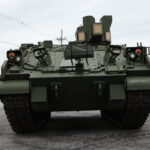
The Army’s top acquisition official said Monday the service has started studying models that could inform prioritization of its major modernization programs in the face of likely flat or declining budgets as well as assessing the long-term economic impact of sustaining future equipment. Bruce Jette, assistant secretary of the Army for Acquisition, Logistics and Technology (ASA (ALT)), told attendees during an online AUSA event officials have brushed off Cold War-era economic models to help inform the implications of bringing on…

 By
By 











